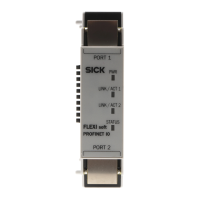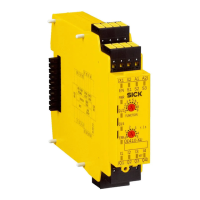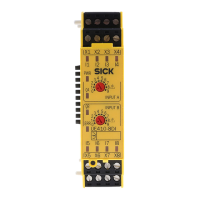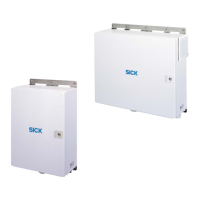7.6.2.1.7 JK Flip-Flop V1
Overview
T
he J and K inputs only affect the outputs if an adjustable signal edge is detected at the
Clock input.
Principle of operation
Table 32: Inputs
Input Description
J Data type: Boolean
K
Clock Data type: Boolean
D
epending on the Inverted parameter, a rising or falling signal edge
together with the statuses of the J and K inputs affects the outputs.
Table 33: Outputs
Output Description
Q Data type: Boolean
•
If t
he J input = 1 and the K input = 0, then the Q output = 1.
•
If the J input = 0 and the K input = 1, then the Q output = 0.
•
If the J and K inputs = 0, the Q output keeps the last value.
•
If the J and K inputs = 1, the Q output inverts the last value.
/Q Data type: Boolean
T
he value at the output is the inverted value of the Q output.
Table 34: Parameter
Parameter Description
Inverted
•
In
put J and K:
You can individually invert any visible input. At an inverted input, a 0
w
orks internally in the same way as a 1 and vice versa.
•
In
put Clock:
No inversion: The function block reacts to rising signal edges.
With inversion: The function block reacts to falling signal edges.
Table 35: JK Flip-Flop V1 truth table without input inversion
Input J Input K Input Clock Output Q
0 0 ↑ Keeps the last value
0 1 ↑ 0
1 0 ↑ 1
1 1 ↑ Inverts the last value
X X No rising signal edge Keeps the last value
X: Value can be 0 or 1.
↑: Risin
g signal edge
↓: Falling signal edge
7.6.2.2 Function blocks for data conversion
7.6.2.2.1 UInt8 to One-hot V1
Overview
D
epending on the parameter set, the function block converts a decimal value at the
input into a 1-of-N or Equal-and-Lower code.
7 C
ONFIGURATION
60
O P E R A T I N G I N S T R U C T I O N S | Flexi Compact 8024589/2020-11-10 | SICK
Subject to change without notice
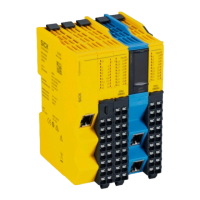
